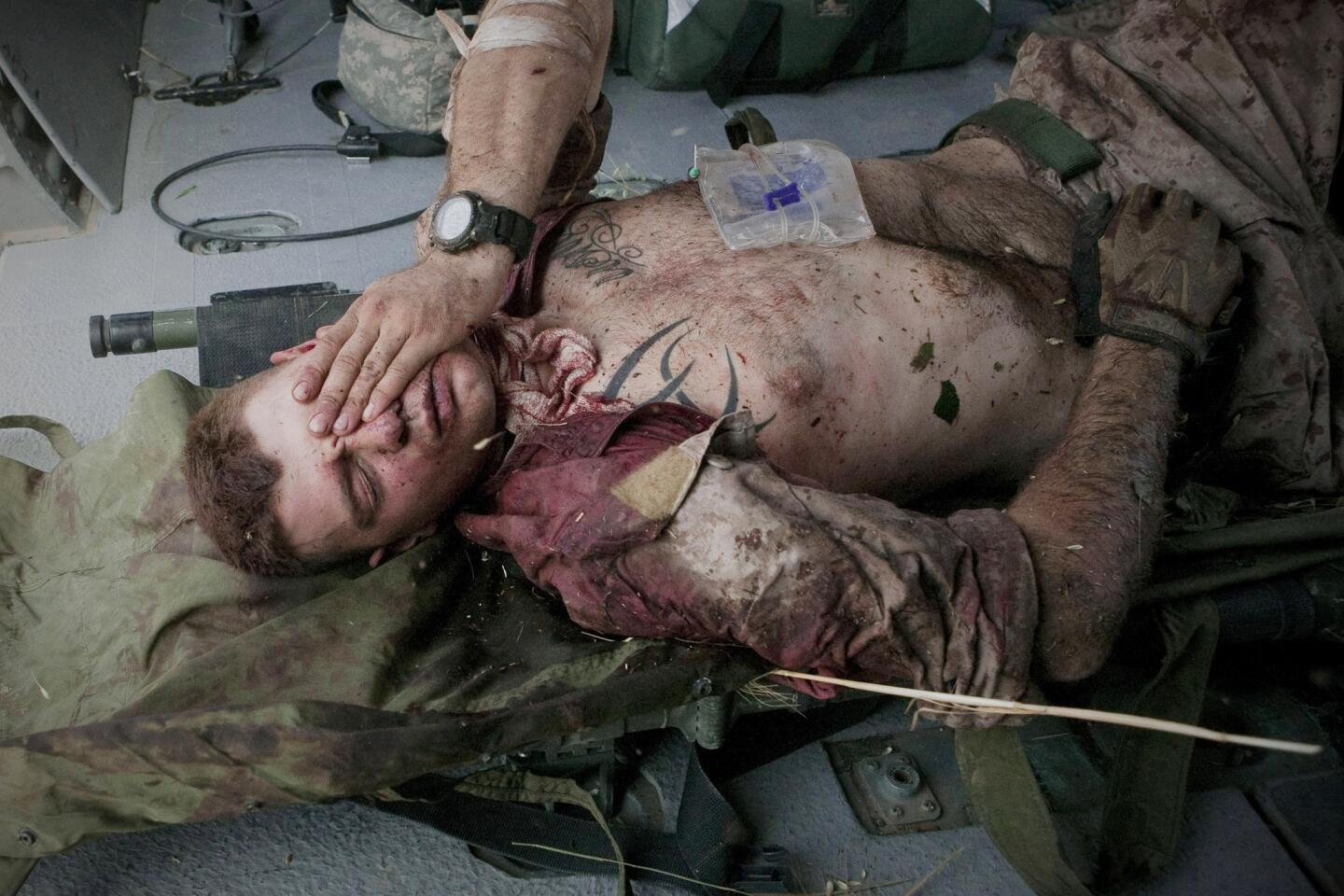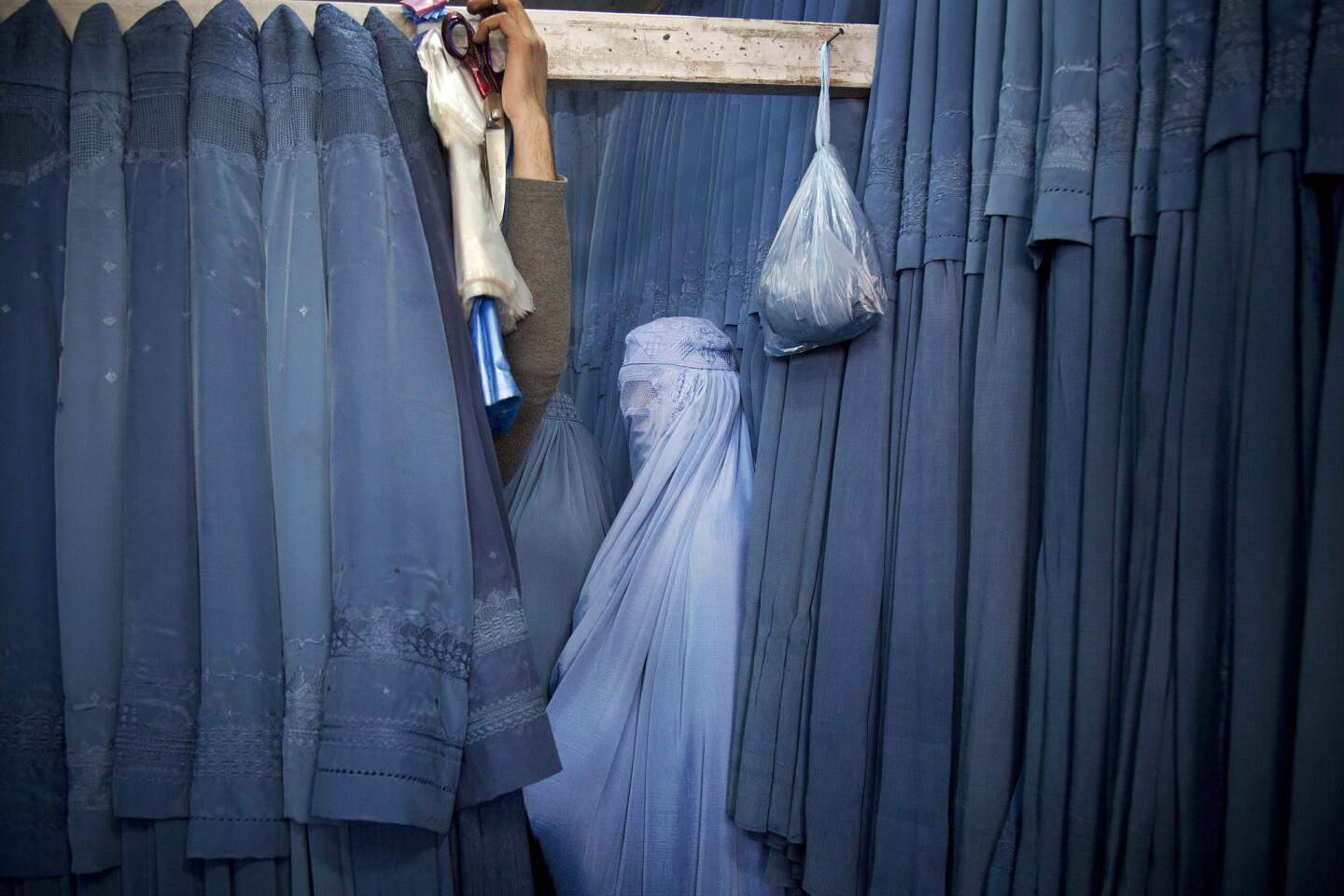The slain journalist who did her best work in George W. Bush’s war
- Share via
German photojournalist Anja Niedringhaus was already a success by any measure when her assignment for the Associated Press took her to Iraq to cover George W. Bush’s misbegotten war.
She had already spent more than a decade covering conficts — first in Sarajevo, where she was hit by a sniper’s bullet on her first day there, then Kosovo where she was blown out of a car when a grenade exploded. In Albania, in 1999, she was one of several journalists mistakenly bombed by NATO forces.
But it was in Iraq that she took the images that would win her the 2005 Pulitzer Prize.
She was, obituaries pointed out Friday, the only woman among the 11 AP photographers who took home the breaking news photography Pulitzer that year.
“For me,” she wrote in the Spring 2012 Nieman Reports, “covering conflict and war is the essence of journalism. My assignment, regardless of the era, is about people — civilians and soldiers....For me it is about showing the struggle and survival of the individual.”
Niedringhaus, 48, was shot to death Friday in eastern Afghanistan while covering the country’s closely watched presidential election. Her Canadian colleague, AP reporter Kathy Gannon, 60, was wounded in the attack.
From Kabul, Afghanistan, my colleague Shashank Bengali reported that the journalists were part of a convoy of election workers delivering ballots to outlying areas in Khowst, “a violent province along the border with Pakistan.” They were in their own car, he said, in a police headquarters compound when a policeman who was part of their convoy approached, yelling “God is great!” As they sat in the back seat, he shot them with his AK-47.
It’s not clear yet what the motive was, but as Bengali reported, the Taliban have vowed to disrupt the election to replace outgoing president Hamid Karzai.
The same year Niedringhaus won the Pulitzer, she was honored by the International Women’s Media Foundation with one of its courage awards. She spoke about how, unlike the many innocent victims of war, she chose to work in conflict areas.
Two of her photographs were part of the AP’s Pulitzer entry. Many of the images are deeply disturbing, including the photo of dead American contractors hanging from a bridge in Fallouja, taken by Khalid Mohammed. But you won’t soon forget Niedringhaus’ image of an American soldier in camouflage fatigues on a rubble strewn city street, facing away from the camera, a tiny GI Joe in camouflage fatigues strapped to his back.
“The image is initially amusing then intensely alarming,” wrote The Weeklings’ Chloe Pantazi who saw it at a Brooklyn Museum of Art show on war photography. “The context is all too literal. How many little boys who once begged their parents to buy them GI Joes as children are still playing the game of war?”
The man responsible for sending that soldier to war, former President Bush, made news Friday with some images of his own.
In the five years Bush has been out of office, he has virtually disappeared from the public stage. He has become an asterisk in his own party, thanks to the lasting unpopularity of the Iraq war.
Does he reflect much on the costs of a war that was never justified, and whose terrible wages are still being paid today? Who knows?
Two years ago, he took up painting — to the shock of his family, and apparently himself.
“Who woulda thought it? Not me,” he said Friday in an interview with his daughter Jenna Bush Hager, a contributing correspondent for “The Today Show.”
They toured an exhibition of his portraits of world leaders at the George W. Bush Presidential Library and Museum in Dallas. “If you had said to me that, one, you’d be working for NBC, and, two, that I’d have a gallery full of paintings, I would say that neither is gonna happen.”
In his studio, he showed off some of his paintings — his cat, some landscapes. His easel held an unfinished Ethiopian landscape.
I saw no images in his studio of Iraq or Afghanistan. He may not favor them as painting subjects, but they hover like ghosts in the background nonetheless.
“Conflict is not all that I cover,” Niedringhaus wrote in her Nieman Reports essay. “I like the Olympics and the World Cup. In sports, there is a start and a finish. With war, the story never ends.”
No it doesn’t. Not for the soldiers who fight them, the journalists who chronicle them, or the presidents who would like to forget them.
ALSO:
Twitter: @robinabcarian
More to Read
Sign up for Essential California
The most important California stories and recommendations in your inbox every morning.
You may occasionally receive promotional content from the Los Angeles Times.


























